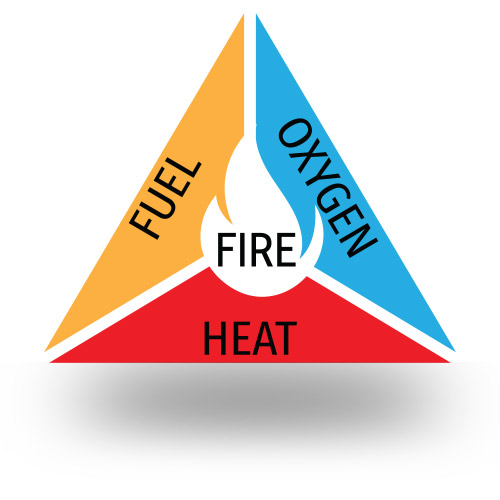Starting a fire with wet wood is a real pain. And when you are relying on a fire for cooking it could mean you might be stuck having to eat cold or uncooked food. This is not something we recommend since a warm meal can really lift the spirits after a long day.
There are of course many reasons for wet fire wood, but it doesn’t mean you have to go hungry. When camping, even pre-cut wood can be wet and difficult to light, but this shouldn’t be a problem if you follow our advice.
Fire basics

Let’s start with the basics. To make a fire you need three things: Heat, oxygen and fuel. Since water robs us of heat, the easiest way to light wet wood (fuel) is to create a lot of heat. This means that getting a lot of flames and heat as soon as possible is essential. Also remember not to smother the flames. A fire needs oxygen to burn.
The problem with wet wood is that the precious heat that would normally combust a dry fuel source now has to evaporate all the moisture in the wood first. It takes over twice as much energy to increase the temperature of a gram of water by one degree Celsius as it does to raise the temperature of a gram of wood. It now becomes clear why you need a lot more heat to light a fire with wet wood.
Why are some fires smoky
Another problem with wet wood is the amount of smoke it creates until the water inside has evaporated. Have you ever wondered why some fires are very smoky? When a fire is not hot enough incomplete combustion occurs resulting in a collection of tiny solid, liquid and gas particles. The smoke will subside once the fire burn hot enough.
Here are some tips for getting that fire started no matter how wet the wood:
Kindling – lots of it
Similar to making a fire with dry wood, your first step is to get together some kindling. In this case though you want to get 3-4 times as much kindling as you normally would. Remember that much of the initial heat energy will be used to evaporate the moisture in the wood so you need to compensate by using much more dry kindling in the beginning.
Tiderbox
In addition to using found kindling, using a tinder box to create fine wood shavings for that first ignition can prove quite helpful. You can purchase one of the many tinder boxes on the market or use the old camping hack of using a pencil sharpener to create fine wood shavings from sticks and twigs.
Chop large logs
Chop your wood into smaller pieces as the inside will be drier than the outside. You should also make several cuts into the sides of the wood with a hatchet. This will expose the dry wood inside and also create more surface area to catch fire.
Use a magnesium fire starter
Magnesium burns very hot and is a good solution to get the fire going when conditions are less than ideal. Scraping some shaving off a magnesium fire block and lighting it will generate enough heat to get your fire started.
How use a magnesium fire starter:
- Prepare your tinder first. Remember to keep plenty of kindling close by, especially if using wet wood.
- Scrape off a generous amount of magnesium shavings directly onto the tinder.
- Use the scraper on the flint side of the rod to create sparks and ignite the magnesium shavings.
Other fire starters
Very fine steel wool also burns quite hot, but needs an ignition source. It does not burn as hot as magnesium, but definitely hot enough to use as a fire starter in wet conditions.
Yet another alternative is to prepare some homemade fire starters made from Vaseline covered cotton balls. These burn hot and will give you an opportunity to dry out some of the wet pieces of wood and get that fire going.
Make a wind shield
If it’s windy make a wind shield by stacking some of the wet wood. This will prevent the heat from being blown out of the fire. Building some rain and wind protection to protect the precious fire is especially useful in wet and rainy conditions.
Once you’ve started your fire, be sure to manage it by constantly drying out wet wood and keep it going. With these essential skills you’ll be able to make a fire in most conditions you’ll come across.